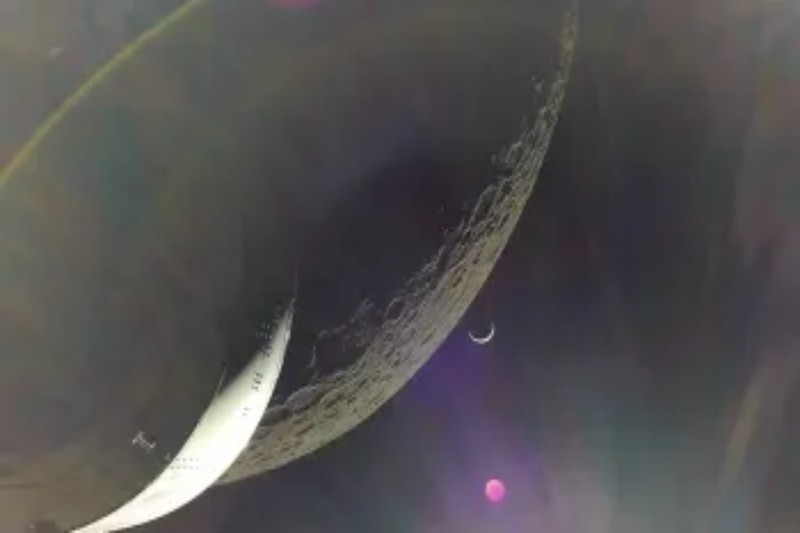NASA’s unmanned Orion spacecraft made a successful return to Earth on December 11, 2022, capping off the historic Artemis 1 moon mission.
Video from Orion captures the dramatic and flaming return of the capsule, which created a trail of fire in the sky after its terrifying dive through Earth’s atmosphere.
On Monday, December 11, NASA shared a one-minute sample of this incredible film on X, the former name for Twitter, along with a link to the entire 25-minute Orion reentry video.
On November 16, 2022, Artemis 1 was launched when an unmanned Orion spacecraft was launched from Kennedy Space Center in Florida using a Space Launch System (SLS) megarocket.
It was just Orion’s second launch, and the first for the SLS, the strongest rocket in use right now. In 2014, the capsule successfully completed a short test flight to Earth orbit using a United Launch Alliance Delta IV Heavy rocket.
On November 25, 2022, the Artemis 1 Orion entered lunar orbit. It remained there for over a week before starting the arduous journey back to Earth. When the spacecraft struck our planet’s dense atmosphere on December 11 at a speed of almost 24,500 mph (39,400 kph), its heat shield—the biggest of its kind ever constructed—was put to the test.
The heat shield made it through the test, but not easily.
In a March call with media, NASA’s Orion Program manager Howard Hu stated, “Some of the expected char material that we would expect coming back home ablated away differently than what our computer models and what our ground testing predicted.”
“So we had more liberation of the charred material during reentry before we landed than we had expected,” he stated.
In preparation for Artemis 2, the program’s first crewed flight, NASA is now making preparations. It will make use of Orion and the SLS, just as Artemis 1. Four astronauts—Victor Glover, Christina Koch, Reid Wiseman of NASA, and Jeremy Hansen of the Canadian Space Agency—will go around the moon and return to Earth on the next trip.
The tentative launch date for Artemis 2 is 2024. Artemis 3 will come next, and if all goes as planned, it will land astronauts on the lunar surface in late 2025 or early 2026.
By the end of the 2020s, the Artemis plan as a whole aims to build a viable, long-term human presence on and around the moon. NASA authorities claim that the abilities and knowledge acquired in accomplishing this goal will aid humanity in making the journey to Mars in the coming decades.





